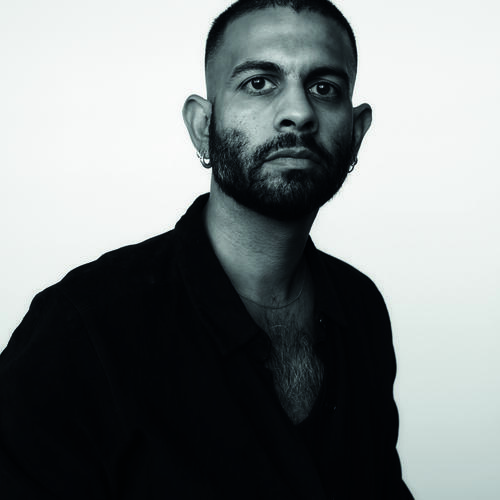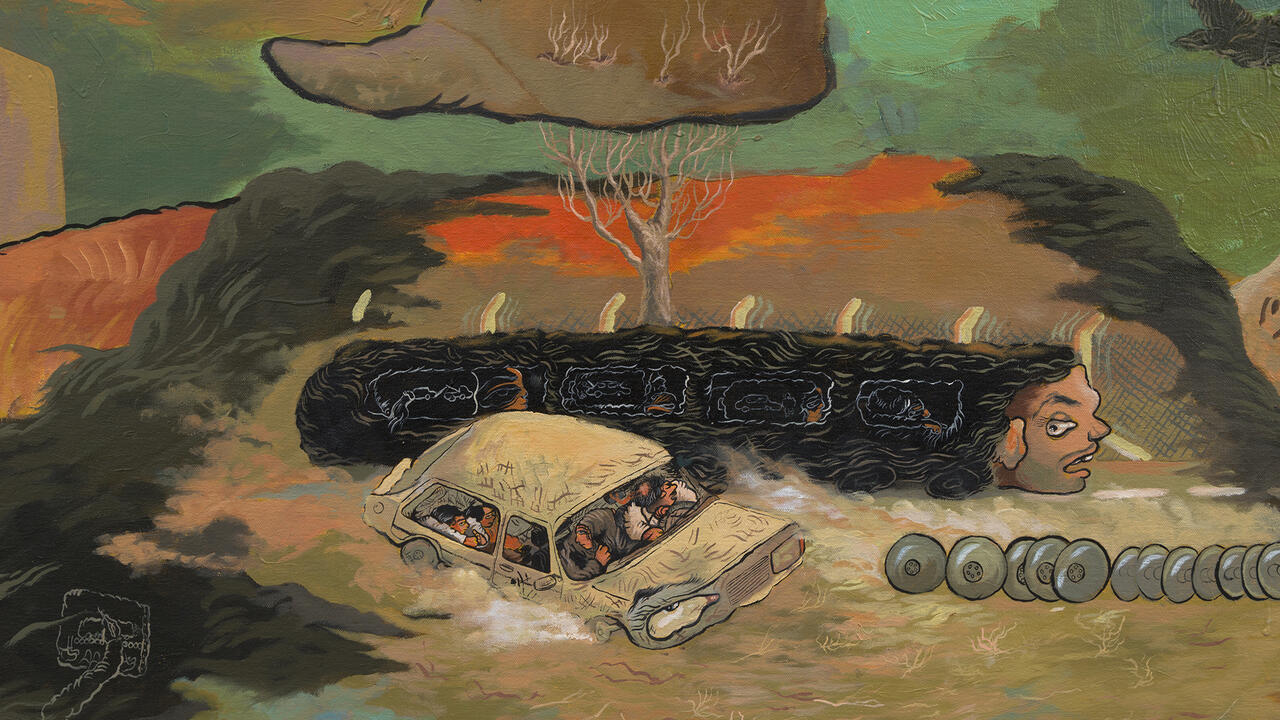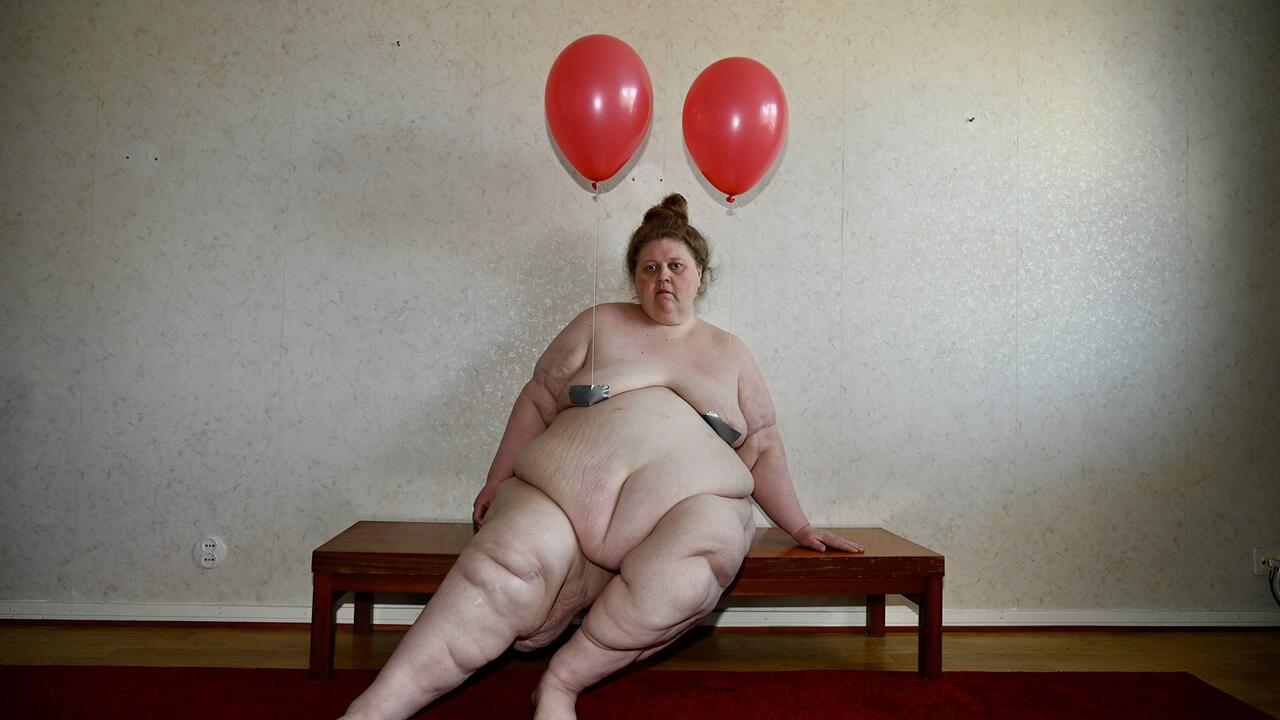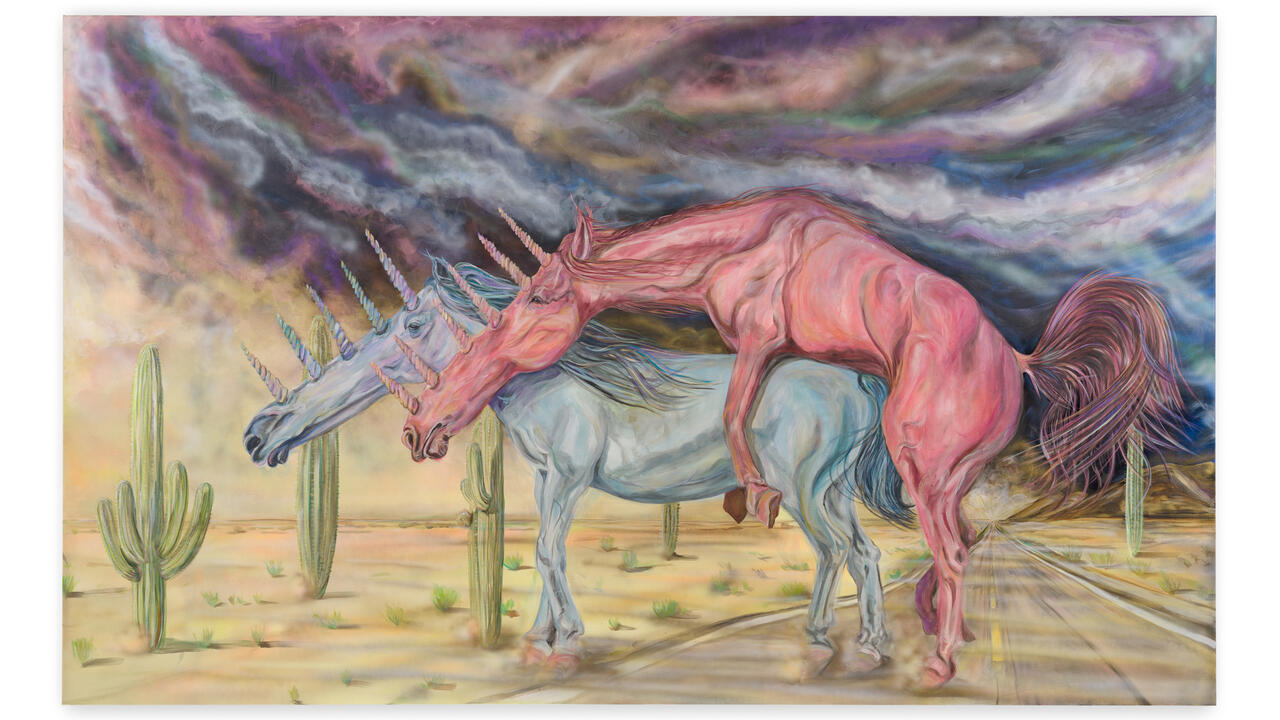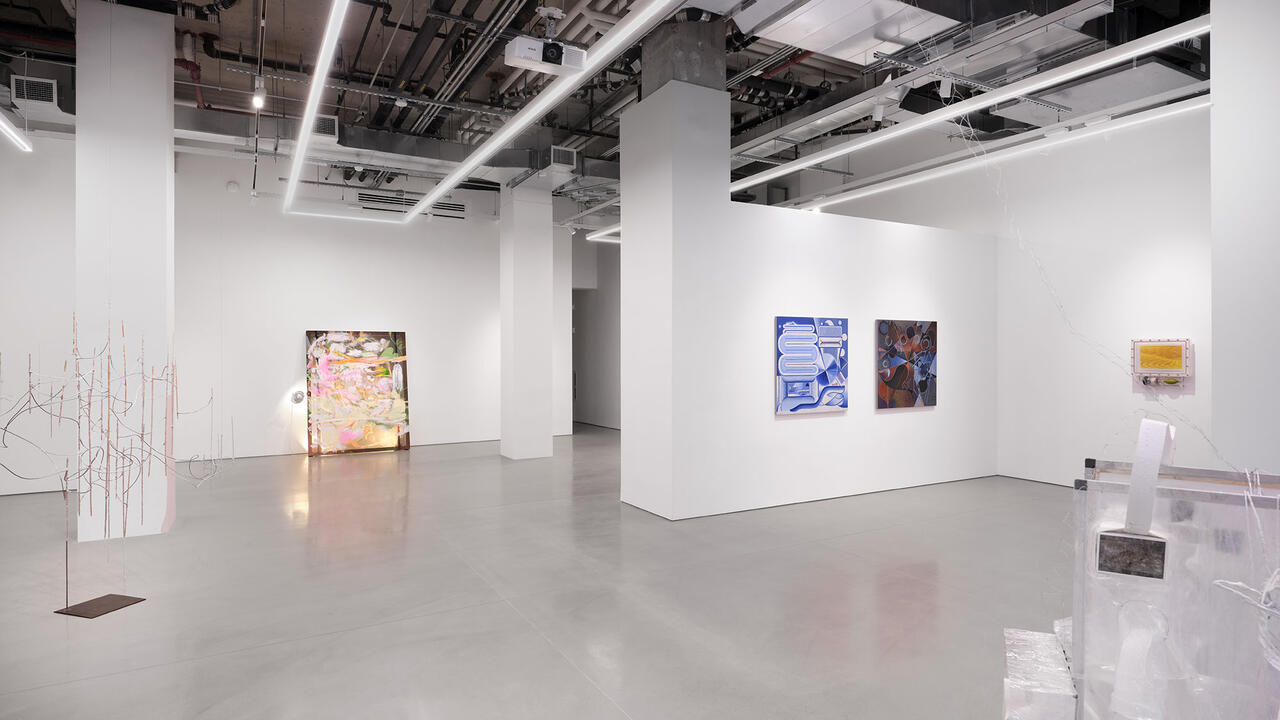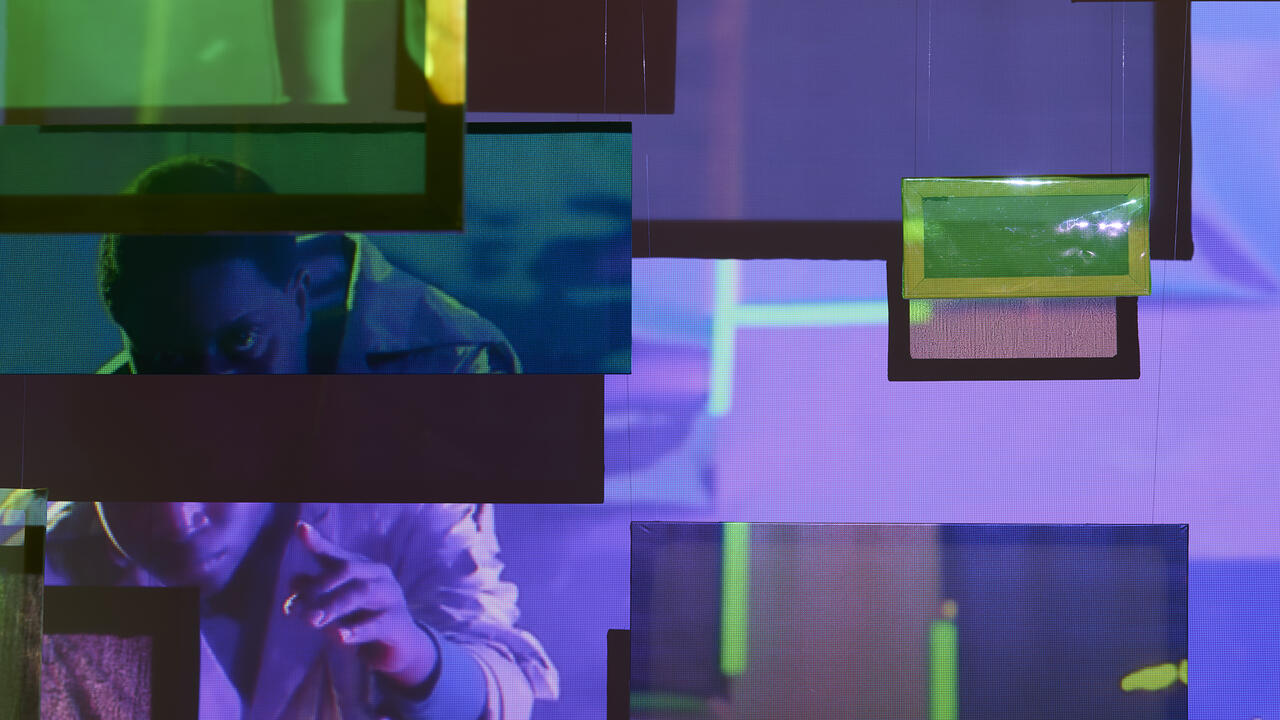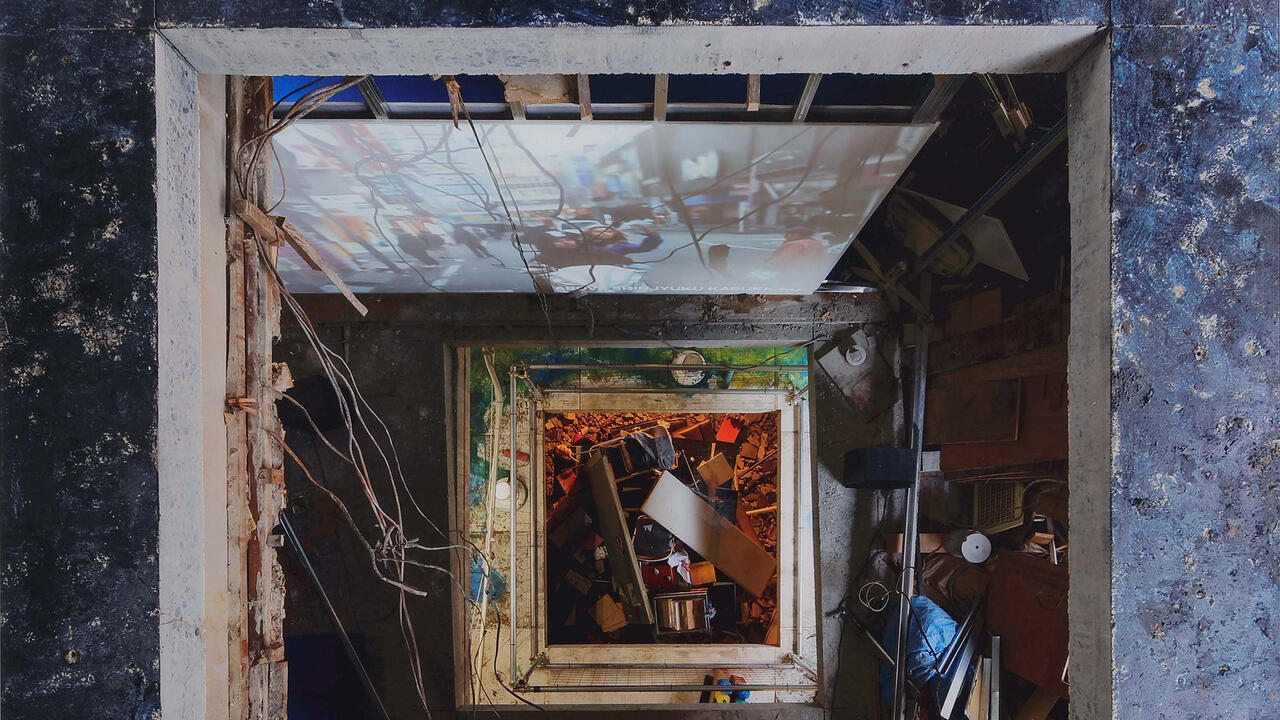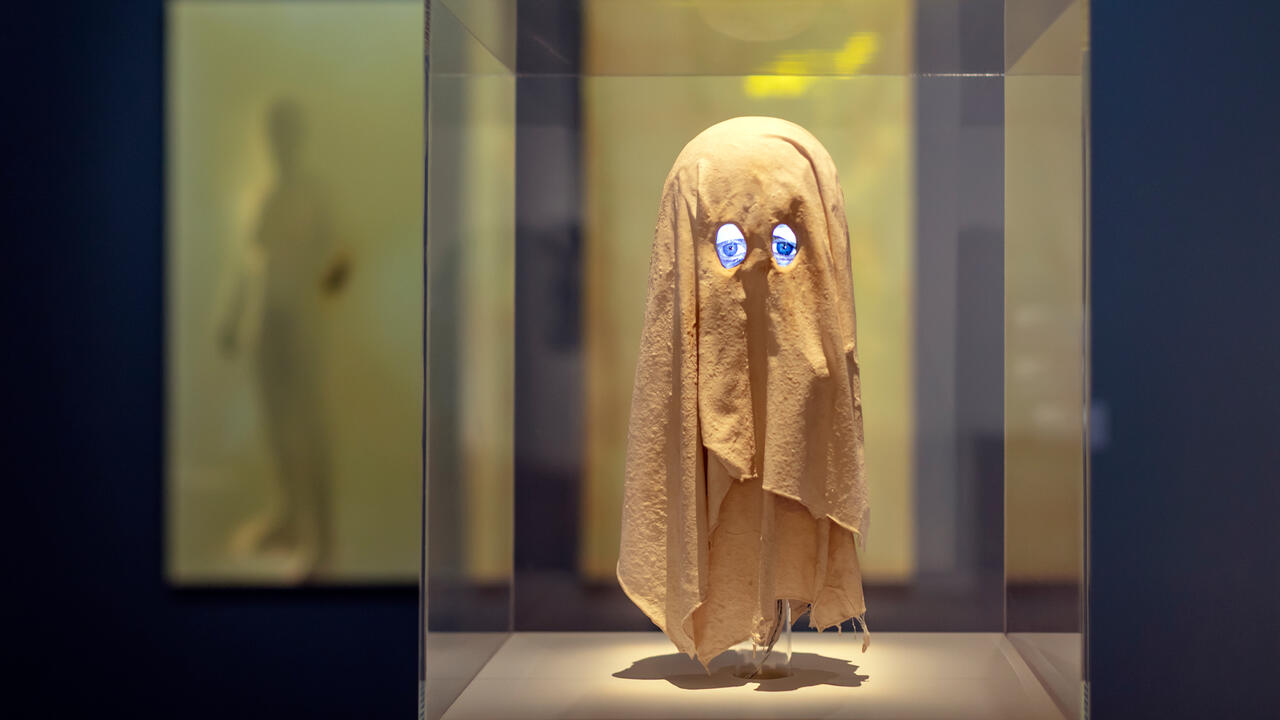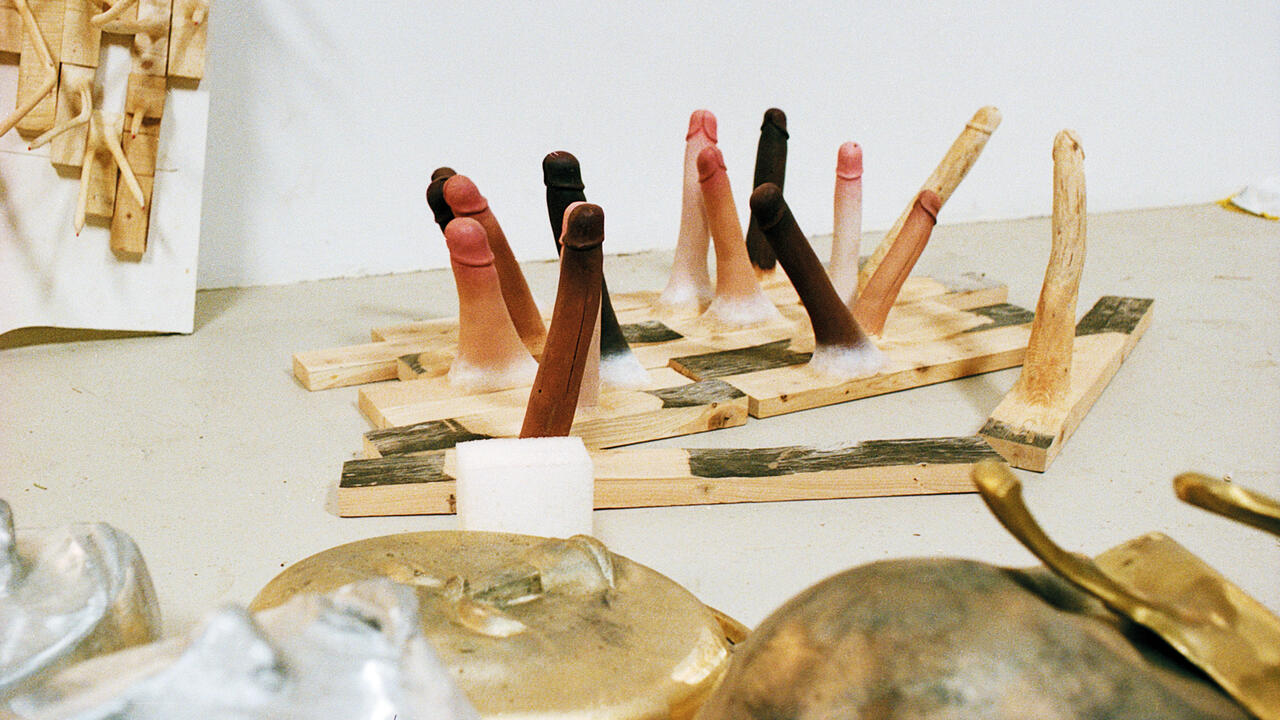The Shows To See Around Town During Frieze New York
With the fair now on, your guide to the best exhibitions in the city
With the fair now on, your guide to the best exhibitions in the city


Darrel Ellis
OSMOS
28 February – 28 June
Just months after his premature death at age 34, the black, gay artist Darrel Ellis – who used photography, drawing and painting to depict spectral, distorted portraits of himself and of his family – became the star of MoMA’s exhibition ‘New Photography 8’ (1992–3). Ellis sourced most of his images from an archive of photographs taken in Harlem and the South Bronx in the 1950s by his father, Thomas, who died in police custody one month prior to Ellis’s birth. These photos became the conduit by which Ellis would examine what happens to photographic memory caught in the schism of loss. Ellis would photograph projections of his father’s photos, then layer geometric shapes onto the image with watercolour, gouache, pencil and ink. Photographed both by Mappelthorpe and Hujar, whose recent museum retrospectives only emphasize their penchant for creating images of subjects of colour, Ellis’s Self-Portrait Based on Peter Hujar Photograph (1990) is also on display. Its tenebrous dislocations of feature and memory feel revelatory.

Louis Fratino
Sikemma Jenkins
18 April – 24 May
As in Frank O’Hara’s poem ‘To You’ – in which the poet gleefully presses up against his beloved in the dark of night to remark, ‘you become a landscape in a landscape / with rocks and craggy mountains / and valleys full of sweaty ferns’ – Louis Fratino’s portraits of friends and lovers capture both the sweet entanglements and the surreal vistas of the bedroom scene. In ‘Come Softly to Me’, Fratino’s first exhibition at Sikkema Jenkins, the 25 oil paintings vary in size from a miniature study to large canvases fit to depict grown, life-size men wrapped in coitus, and fuse cubist form with personal storytelling. In Spiral (2019), a man’s member engorges into a large pink seashell. In My Meal (2019), Fratino takes a table-top approach to the artists’ studio: sketches and photos are strewn amongst flowers, Mario Mieli’s landmark text Toward a Gay Communism (1977) and two eggs on toast.

Barbara Ess
Magenta Plains
7 April – 12 May
For her first show at Magenta Plains, New York photographer, No Wave musician and founder of the pioneering zine Just Another Asshole, Barbara Ess mobilizes techniques of militaristic reconnoitring and pinhole photography to examine the perceptual rifts and power dynamics at play between what is watched over and what is seen. Sourcing images, sound and video from various online communities – a live feed monitoring the border between Texas and Mexico in her ‘Surveillance’ series (2011/2019), for instance – and moody, domestic shots of Ess’s New York City apartment, the artist’s exhibition ‘Someone to Watch Over Me’ arrests its viewer with the painterly residues of lo-fi imagery. A video, Nightlights (Surveillance Series) (2011), shows footage of night at the border – a horizon in the distance, or the top of a fence? It is hard to say. Individual pixels blink in slow irregular sequence; through cross-hairs, Ess’s aim is to blur.

Vivian Suter
Gladstone Gallery
11 April – 8 June
Vivian Suter’s large-scale, unstretched canvases hang like a canopy above you from all corners of Gladstone’s Chelsea gallery. Others lie overlapped on its concrete floors. Some dangle from hangers in a row; walking through, others curl like fronds just above eye-level. This uncontained, majestic form of display is typical for Suter, who brings the lush vegetation and volcanic vistas of Panajachel, Guatemala, where she has lived for the past 40 years, into the gallery. Large swaths of paint coat her mostly abstract canvases. In some, slight allusions to animals and human figures appear, in others geometric reflections of Momosteco weave patterns, native to the country. All painted en plein air, some unprotected from the effects of Guatemalan hurricanes and floods, Suter’s canvases’ unkemptness and her immersive, airy display take viewers directly to the banks of Lake Atitlán and delight with visions of unexpected life.

Ser Serpas
Ludlow 38
25 April – 2 June
Ser Serpas makes sculptures by gutting them, as well as the spaces that are meant to keep them. Made with discarded objects found near the gallery as well as a few prepared materials, the four sculptures in ‘Against Attachment’ antagonize the values we attach to having space to make art and the material conditions within which an artist might choose to be productive. Most of the works are installed in the gallery’s dark back room (so as to replicate Serpas’s windowless apartment and studio in Bushwick) where patrons are instructed to enter one at a time. Everyday objects are arranged in impossible positions: a fridge is cradled by a busted radiator (as already, 2019), an old cot juts out at you at eye-level (can be soft, 2019) and Untitled (2019) – a laptop depicting a video of YouTube songs searched for and played, one track upon the other – blares incoherently into the space. Serpas’s lonely, affectively charged happening concludes with a disposal of the works back to the street: ‘i never make a mess’, Serpas writes, ‘i just move a mess from one place to another’.

Doreen Garner
JTT
21 April – 26 May
In ‘She is Risen’ Doreen Garner’s visceral, moving exhibition at JTT, the artist continues to probe at the ways in which the female black body is – in medical history and art history alike – rendered as specimen, scapegoat, or sacrifice. Several subjects are examined: one sculpture, titled Anarcha’s Tomb: Anarcha’s Womb (2019) conjures the brutal surgical operations Dr. J. Marion Sims, ‘father of modern gynaecology’, performed on one of his black slaves, Agatha. Another large-scale sculpture, Henrietta: After the Harvest (2019) casts the irradiated cervix of Baltimore resident Henrietta Lacks whose cervical cancer cells were harvested without her consent, in urethane foam, crudely wrapped in barbed wire. Heard from her Larynx: Sandra (2019) is also on display, an ersatz gramophone with a horn whose insides are coated with a thick layer of pink silicone, and which plays, on loop, the recording of the wrongful arrest of 26 year-old African American woman Sandra Bland, days before her suicide in jail. Garner uses pearls for fat cells, shiny plaster for flesh, urging her viewers to look closer at what they deigned to look away from: the black body, and its misuse as spectacle.

Aria Dean
Chapter NY
31 March – 5 May
Aria Dean uses video and sculpture to map out the structures that tie theories of black collective ontology to race’s tenuous and reflexive relationship with the language that produces it. Several of Dean’s (meta)models: fam series (all 2019)are flat, gestural silhouettes madewith two-way mirrors, those that might be used in police interrogations; these eerie, two-dimensional characters resemble an untidy quorum of friendly ghosts attempting to rally, as much as they do outlines of the dead, traced by police onto the ground. They hover near a video monitor in the centre of the gallery depicting a lone, similarly mirrored pedestal, waiting curb-side for its artwork. A hand-held camera expressively jumps to and away from this subject, recalling the styling of early hip-hop videos. Three voices engage in a dialogue elucidating Dean’s central juxtaposition. This public space feels like a waiting room, in which the voices (all performed by artist Devin Kenny) digress and delay between two options: the potential of theoretical models and the too familiar vernaculars of every day life.
Don’t miss Andrew Durbin’s feature on Janiva Ellis, whose work will be included in the Whitney Biennial from 17 May, and Negar Azimi’s interview with Simone Fattal, whose show is now on at MoMA PS1
Main image: Louis Fratino, Metropolitan, 2019, oil on canvas, 152 × 241 cm. Courtesy: the artist and Sikkema Jenkins & Co, New York








